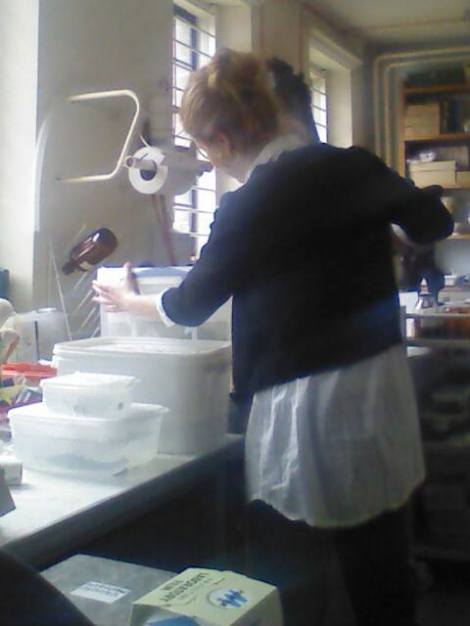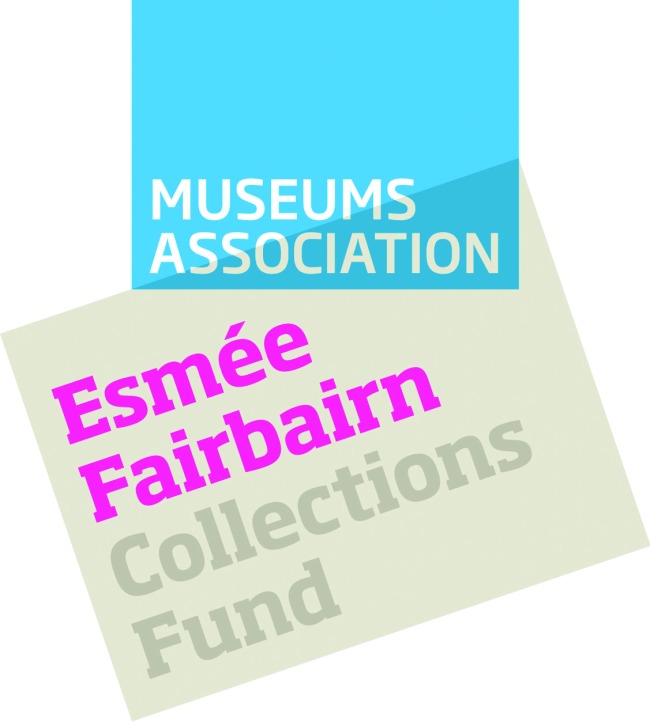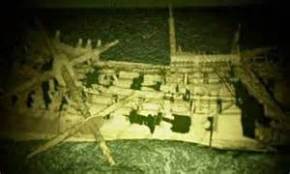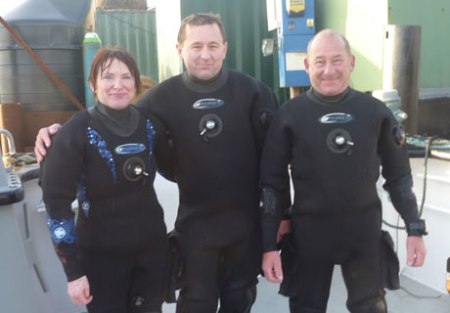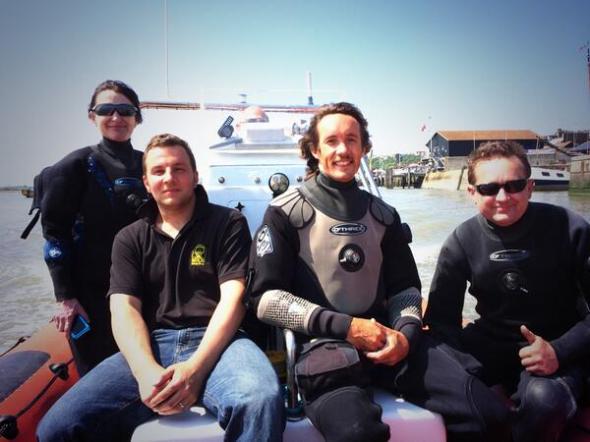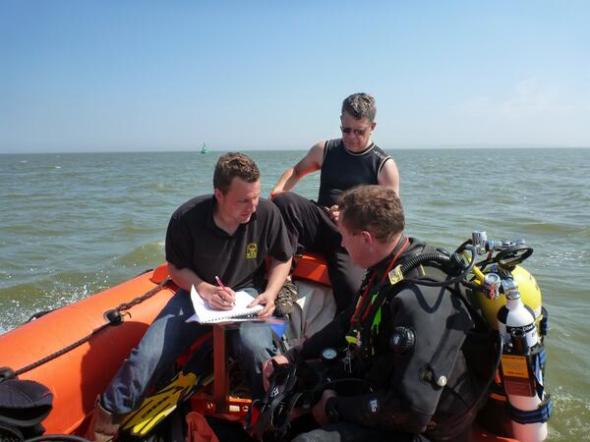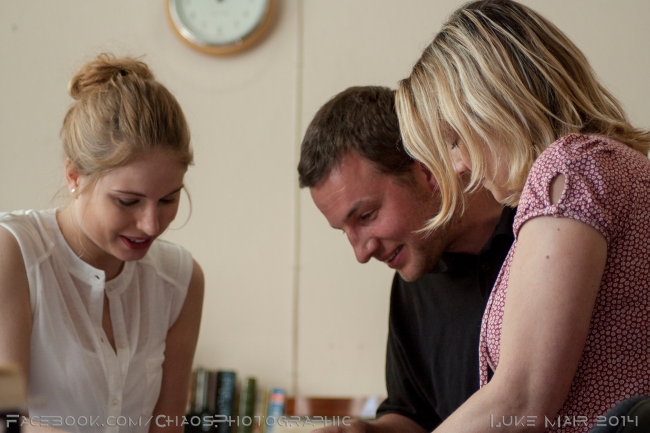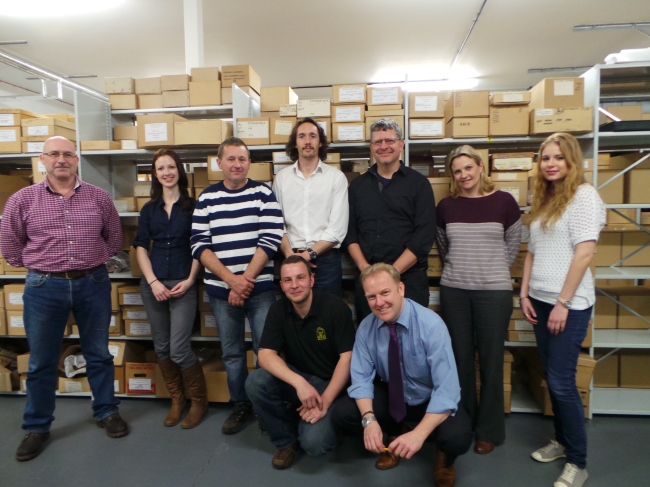A picture of me conserving the first finds of the project, ready for storage.
This is my initial blog post as Project Curator for The London Shipwreck Project, over the coming months I will be posting regular updates on the progress of this exciting venture.
The Esmée Fairbairn Foundation has been providing charitable funding to the arts sector since 1961 and in November of last year, following an application submitted by our wonderful Curatorial Manager Clare Hunt, we were fortunate enough to receive a generous grant from the charity. The funding we received was provided for the purpose of installing a new, permanent display and instigating a community engagement project based around excavations of The London shipwreck.
As many of you will have probably seen and heard in the media recently, English Heritage has commissioned Cotswold Archaeology to excavate the wreck over the next two years – with the first phase of the project having started this week! The London was actually rediscovered back in 2005 and immediately designated under the Protection of Wrecks Act (1973) and placed on English Heritage’s Heritage at Risk Register, with Wessex Archaeology undertaking initial investigations. English Heritage has been continually monitoring the site since then, with information about The London made available on a dedicated page on their website for the past few years. In 2008, The London was also discussed in the BBC2 documentary ‘Thames Shipwrecks: A Race against Time’. Then, in 2011, the Government licence to dive the wreck was given to Steven Ellis, an experienced Thames Estuary diver hailing from our very own Leigh-on-Sea. Over the past three years he has been meticulously recording the site and rescuing some beautiful finds for us to conserve and put into storage, with some of the information about and images of this work on the London going on display in our Thames Titanics exhibition back in 2012. Then, fortunately, English Heritage was able to secure funding at the end of last year to undertake this incredible project. Obtaining funding for any archaeological excavation (if at all!) can usually be an incredibly costly, lengthy and complex process, so the fact that this is all happening highlights how significant this amazing wreck is!
CGI reconstruction: ©Touch Productions
Steven Ellis and his team of divers: ©Steven Ellis (@StevenEllis3)
As the repository museum for all historical and archaeological artefacts found within this area of the Thames Estuary, all finds from the London must be given to Southend Museums to conserve, store and keep. Without the Esmée Fairbairn funding, providing preventive conservation, storage, and access for academic research would have been the limit of what we could have achieved with the finds. Seeing as we do have this generous grant, however, we will be able to provide full, remedial conservation on the most significant finds; install a new, permanent display at Central Museum; produce a publication about The London to be made available to the public; and develop and install a brand-new touch-screen interactive feature to enable visitors to learn more about the wreck and its history. One of the most exciting things that this funding will also enable us to achieve (in my opinion anyway!), is the development of a community engagement project which will enable members of the public to become fully involved in the project and the post-excavation phases. We will be looking to recruit local people to volunteer as Finds Assistants for the project, providing them will full training on the basics of marine archaeology; preventive and ‘first-aid’ conservation of marine finds; archaeological storage to conservation-grade standards; and display and installation of marine archaeology. They can then participate during the final week of excavation this year, by assisting with all post-excavation finds sorting, first-aid conservation, transfer, storage and research and display of the finds. Furthermore, this will take place at a special ‘finds centre’ at the end of the pier, in full view of the visiting public, where the divers will be delivering the objects that they have found to the end of the pier, via boat from the excavation site. This will enable other local people to witness first-hand how the project unfolds – a unique opportunity providing the people of Southend an exciting way of engaging with their own heritage! In addition to all of this, we have also taken on board (excuse the pun!) a Voluntary Project Photographer, to visually document the entire project from start to finish. These images will then go on display for a dedicated exhibition next year, at the newly relocated Beecroft Art Gallery (opening later this year).
Some of the divers and Marine Archaeologists about to head off during the first week: ©MSDS Marine (@MSDSMarine)
The team out on the water during excavation this week: ©Steven Ellis (@StevenEllis3)
One of the first photograph from our Volunteer Project Photographer Luke Mair featuring myself, Mark James of MSDS Marine and Clare Hunt, Curatorial Manager of Southend Museums, inspecting the first finds. ©Luke Mair
So as you can probably tell, these are exciting times for the Museums service and especially exciting for me, as the lucky Curator in charge of the project! I will endeavour to provide several blog posts for you all throughout the duration of the project, in order to keep you updated with exciting new developments and the project’s ongoing progress. My next post will be entirely dedicated to the questions that you, the people of Southend, may have for me about the project. So, if you have any queries, please leave it in the comments section and I will try to answer as many as possible for you in my next post.
In the meantime, if any aspect of volunteering as a Finds Assistant appeals to you, then please apply before 20th June. You won’t be obligated to participate in every single aspect of the process (unless you want to, of course!) but can get involved with different stages. We will also arrange your volunteer duties around the days and times that you are available. So if you are interested please go the ‘London Shipwreck’ page of our website (www.southendmuseums.co.uk) and follow the instructions at the bottom of the page.
The first photograph of the whole project team featuring Steven Ellis and people from English Heritage, Cotswold Archaeology, MSDS Marine, Pascoe Archaeology Services and Southend Museums: ©English Heritage
Follow our progress: @EHMaritime , @EnglishHeritage , @MSDSMarine , @StevenEllis3 , @CotswoldArch and @SouthendMuseums
#LondonWreck1665

